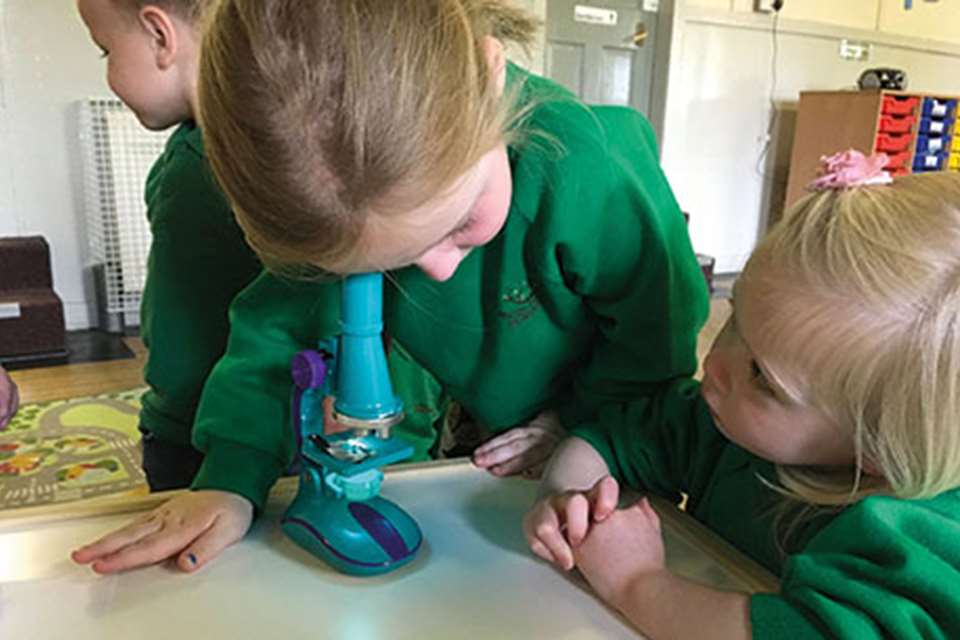EYFS Activities: We’ve explored… engineering
Annette Rawstrone
Monday, March 18, 2019
How one setting is immersing children in activities related to STEM subjects. Annette Rawstrone reports

Download the PDF of this article
Reviewing the opportunities for children to participate in STEM – science, technology, engineering and mathematics – activities at Meadows Nursery in Stocksfield, Northumberland has led to them exploring many new areas while following the children’s interests.
‘STEM knowledge and skills are often underestimated, which is why we at Meadows believe it is never too early to start introducing STEM ideas to children,’ explains nursery nurse Victoria Lishman.
‘STEM is of particular interest to Meadows as we wish to involve all children, especially the girls, in exciting activities to engage them in problem-solving and critical thinking in order to inspire the next generation of innovators and inventors.’
Practitioners introduced engineering concepts to the children by talking about different vehicles, starting with vehicles that fly, as this is an area that the children are fascinated with.
‘We looked at aeroplanes and how they fly, before discussing our own experiences of going to airports and also seeing planes fly over the nursery garden,’ says Ms Lishman. ‘After making paper aeroplanes, one child pointed out that they would be too heavy to fly on a paper plane. This led us to explore weight.’
Children discussed what tools can be used to measure how heavy items are. They gathered the weighing scales from the maths area, which they could stand on to measure their body weight, and they got the kitchen scales so that they could also practise weighing small objects.
EXPERIMENT
Ms Lishman decided to extend the children’s learning by combining their curiosity about both movement and weight and conducting a fun experiment. They threw string over the structural steel suspension pole in the room and attached it to paper to make a basket. The children then tried to blow the basket to see if they could move it.
They all succeeded in moving it, although some of the children needed to be helped by getting them to imagine blowing out candles.
Each child then chose an item to put in the basket, and tried to move it by blowing. Some of the items that the children chose broke the string, which led them to question why and move on to consider how heavy was too heavy.
‘The children explored the basket independently throughout the afternoon. A small group decided to use the junk-modelling items from the deconstructed role play area to make their own swings for the dolls and puppets. This was very unexpected,’ says Ms Lishman. ‘They chose the string, counting how many pieces they would need and cutting it themselves before Sellotaping it to a box independently.’
The next week, practitioners followed up on the children’s explorations by discussing ‘drag’ and investigating how far different sized aeroplanes can fly. They made paper aeroplanes in a variety of sizes and threw them to see how far they would go. Practitioners then introduced the idea of cutting the ‘noses’ off the aeroplanes to see if they still went as far. They found they didn’t tend to fly as far, although it depended on how they threw them.
The children and practitioners are enthusiastic about what they have been learning and are planning to continue by making parachutes and seeing whether they can get them to float. Practitioners have shared the investigations with parents and have given them a list of suggested STEM activities that they can do at home with their children in order to extend their knowledge and understanding of this topic, such as playing Colour I Spy to encourage children to look at and talk about their environment in detail, as well as getting them involved with cooking, building with bricks and encouraging the use of scissors.
LEARNING BENEFITS
‘The learning from our engineering activities has been far-reaching and varied,’ says Ms Lishman. ‘They are using words such as “aerodynamic” and “thrust” as they begin to seek out challenges themselves, such as making paper fans to move marbles along the floor.’
Communication and language
They listened in small groups and followed instructions. They now understand ‘why’ and ‘how’ questions and are using more complex sentences to explain what is happening and anticipate what might happen next, which shows their vocabulary has expanded.
Personal, social and emotional development
They gained confidence to talk to each other, sharing their ideas and demonstrating friendly behaviour as they took turns with the basket. The children who chose to extend the activity selected and used resources and initiated play, offering cues to others to join in.
Physical development
They used one-handed tools and equipment such as scissors when making their own baskets and swings. They were aware that they need to use scissors safely.
Literacy
Those who made their own swings to take home decorated them and gave meaning to the marks they made as they drew.
Mathematics
They used number names and number language such as ‘weight’, ‘measure’, ‘heavy’, ‘light’. They also used positional language and spoke about the shape of everyday objects.
Understanding the world
They made comments and asked questions about aspects of their familiar world by watching the aeroplanes flying over the garden and the helicopters going to the army base. This involved talking about the things they have observed, why things happen and how things work.
Expressive arts and design
The children used tools for a purpose during the activity. Once the activity had finished, the children built stories around toys and used resources to create props to support role play.
DECONSTRUCTION ZONE
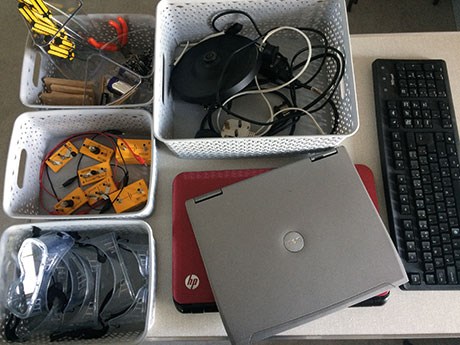
To encourage an understanding of what tools are for and enable children to use them, the four-year-olds at Meadows Nursery are also enjoying a deconstruction programme. This involves them taking apart different pieces of disused technology, including keyboards, laptops and internet routers, using screwdrivers and wire cutters and then looking at how they are made.
The children practised using screwdrivers by taking screws out of pieces of wood before introducing a piece of technology. Ms Lishman explains, ‘The children enjoyed working out which screwdriver would work for the small screws on the back of the computer keyboard and once inside asked about the circuit board and resistor. They then took great enjoyment in taking the keys off one by one.’
BOOK CORNER
The Queen Engineer
by Suzanne Hemming and Jacqui Hughes
What you want to do and what you ought to do aren’t always the same thing. Faced with just this dilemma, how can Princess Flo engineer a compromise that will please the King?
My Mummy is an Engineer
by Kerrine Bryan, Jason Bryan and Marissa Penguinho
Mummy’s job as an engineer means that she creates real things that once were dreams. This book touches upon electrical, civil and mechanical engineering.
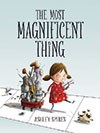 The Most Magnificent Thing
The Most Magnificent Thing
by Ashley Spires
The girl has a wonderful idea – she’s going to make the most magnificent thing. She knows just how it will look and just how it will work. All she has to do is make it…
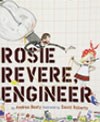 Rosie Revere, Engineer
Rosie Revere, Engineer
by Andrea Beaty and David Roberts
Rosie may seem quiet during the day, but at night she’s a brilliant inventor of gizmos and gadgets, and dreams of one day becoming a great engineer.
Wendel’s Workshop
by Chris Riddell
Wendel loves to make things, and if his inventions go wrong, he just throws them away and starts again. But when he discards his old robot assistant and decides to make another one, he gets more than he bargained for.
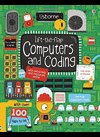 Lift the Flap Engineering
Lift the Flap Engineering
by Rose Hall and Alex Frith
Discover how engineering works and the many things that engineers do, from the houses and cities we live in to the way we travel and even the sound of the music we listen to.
 Look I’m an Engineer
Look I’m an Engineer
by DK
Hands-on activities aimed at children aged three to six years old, from how to make strong paper bridges to powering a tug boat with an elastic band and which materials make the best parachutes.



